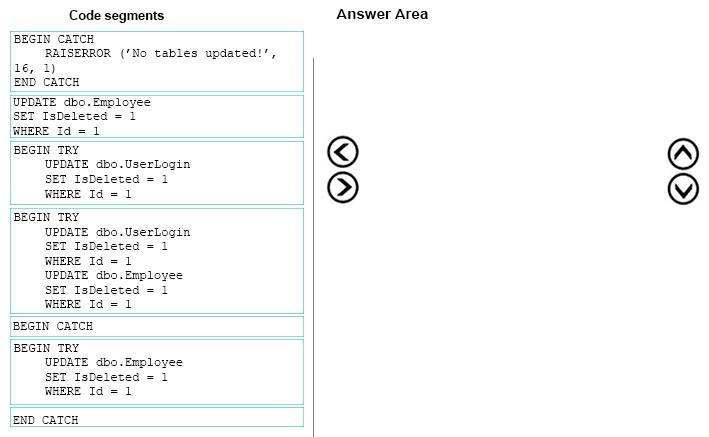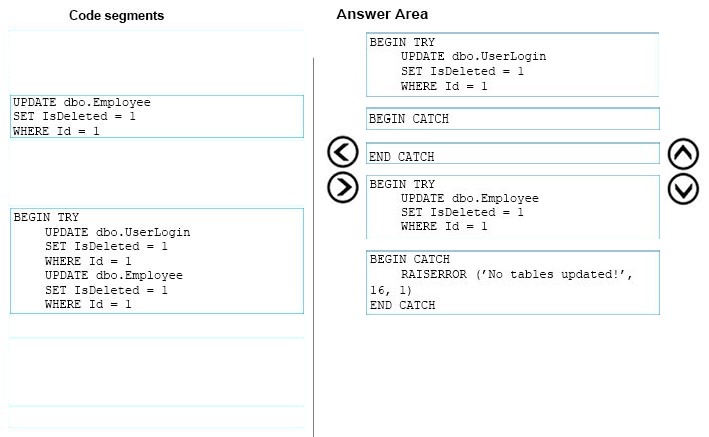

DRAG DROP -
You have two tables named UserLogin and Employee respectively.
You need to create a Transact-SQL script that meets the following requirements:
✑ The script must update the value of the IsDeleted column for the UserLogin table to 1 if the value of the Id column for the UserLogin table is equal to1.
✑ The script must update the value of the IsDeleted column of the Employee table to 1 if the value of the Id column is equal to 1 for the Employee table when an update to the UserLogin table throws an error.
✑ The error message "No tables updated!" must be produced when an update to the Employee table throws an error.
Which five Transact-SQL segments should you use to develop the solution? To answer, move the appropriate Transact-SQL segments from the list of Transact-
SQL segments to the answer area and arrange them in the correct order.
Select and Place:

Robintang0924
Highly Voted 5 years, 5 months agoHoudinni
Highly Voted 5 years, 10 months agoVermonster
Most Recent 4 years, 6 months agojulie2020
4 years, 11 months agoAnette
5 years, 1 month agoASQL
4 years, 8 months agodaniel_yes23
5 years, 2 months agoGuino
5 years, 3 months agomoehijawe
5 years, 5 months agomoehijawe
5 years, 5 months agoNiv
5 years, 8 months agoHS_
5 years, 9 months agotcroots19
5 years, 3 months agoAndy7622
4 years, 6 months agoM4x
5 years, 9 months agoBartek
5 years, 10 months agoRedHead
5 years, 9 months ago